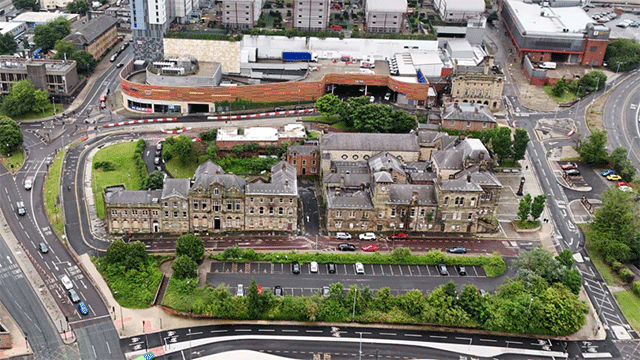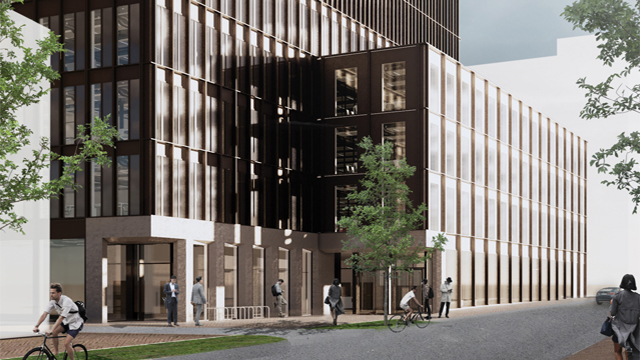COMMENT There is an expression in commercial real estate, “under-demolished”, which was coined by Chicago real estate guru Sam Zell. It related to the retail market at the time but could now equally apply to the hotel industry.
Zell believed the problem of over supply wasn’t so much about too much property having been built, but that too much was no longer appropriate, creating a large stock overhang.
All commercial real estate markets are driven by occupier requirements, and these requirements inevitably shift over time, depending on a number of real estate-specific, economic, technological or social factors. Often these “change” factors are interconnected, and the need for real estate to adapt is even more pronounced when these factors collide.
Logistics has shifted heavily to automation and large-volume warehousing, complemented by last-mile delivery hubs, to deal with the buoyant digital retail environment. Offices are adapting to deal with hybrid working and ensure that corporate occupiers are able to provide attractive environments to hook the best talent. Retail is the most extreme example of change creating change, where it has become experience-focused, thereby applying pressure on landlords to adapt physical spaces and curate tenant mixes, adapt or die.
Challenges and opportunities
Hospitality has its own challenges and opportunities derived from shifts in consumers’ social and working lives, turbo charged by the pandemic, economic climate and technological developments.
The part of the hotel industry at greatest risk is in the midscale segment – the full-service hotels with high operating leverage and high break-even operating margins. These properties are most vulnerable to competition from the Airbnb phenomenon, which caters for the experiential demands of the modern consumer while offering value for money. They are being squeezed between the need to keep prices down and the rising costs of their operations.
Rampant inflation has magnified the problem for these operators. Property technology (efficient plant, alternative energy, BMS and heat-loss control), together with operational tech (to optimise staff efficiencies), can solve part of the problem. But these combined efficiency gains are not always sufficient.
Wake-up call for investors
There may now be a wake-up call for investors in the most vulnerable assets, an appreciation that the market is just not there in sufficient volume to pay the rates required to optimise the value of the underlying real estate, or even cover the expenses. Something more dramatic may be required, either to appeal to a different market segment that will pay the higher rate, close or repurpose those elements of the hotel that are generating the bulk of the losses, or seek an alternative use for the property altogether.
The leisure travel market has blossomed since Covid restrictions were lifted, on the back of a predominantly domestic consumer boom, although international travellers are now also back with a vengeance. While much of the demand for leisure consumers is based on location, there is still an opportunity for owners to adapt their product to suit this growth segment. Offering spa and wellness could be the answer, or activities (onsite or locally), or membership facilities, or animated spaces and/or experiential accommodation (lodges and yurts). With the right execution, these can be, and often are, game-changers.
Alternative uses
But what if these can’t work? Exploring alternative uses for properties could be a way of re-energising the assets. From a planning perspective, that would often be well received by planning officers, given a clear viability assessment can be shown against continuing as-is, while the land itself would be considered brown belt.
Keeping within the same use-class would be the most secure option. Converting bedrooms into longer-stay formats while closing or letting F&B spaces would allow operators to benefit from the resurgence of the aparthotel and serviced apartment models, without the full-service cost over-hang. The potential to monetise otherwise redundant F&B spaces by letting out to third parties or running as co-working areas would be the icing on the cake.
Privately-owned, large-scale student accommodation has been a darling of the property industry for almost two decades. Given the right location, the opportunity to let out hotel rooms as upscale student accommodation could be viable, and the conversion costs are minimal, while the operating costs are a fraction of the equivalent cost for a hotel.
At the other extreme, shifting to residential is something to consider. Assuming that the “bones” of the property can be adapted, this is a very real option. Given that high construction costs are likely to curtail much new stock coming to market, values or rents could remain fairly high despite the dampening effect of rising interest rates.
All is not lost for midscale hotels, but adaptation may be required, either in terms of their operations (at the very least) or the very nature of what they are.
Christopher King is managing director of Align Partners











